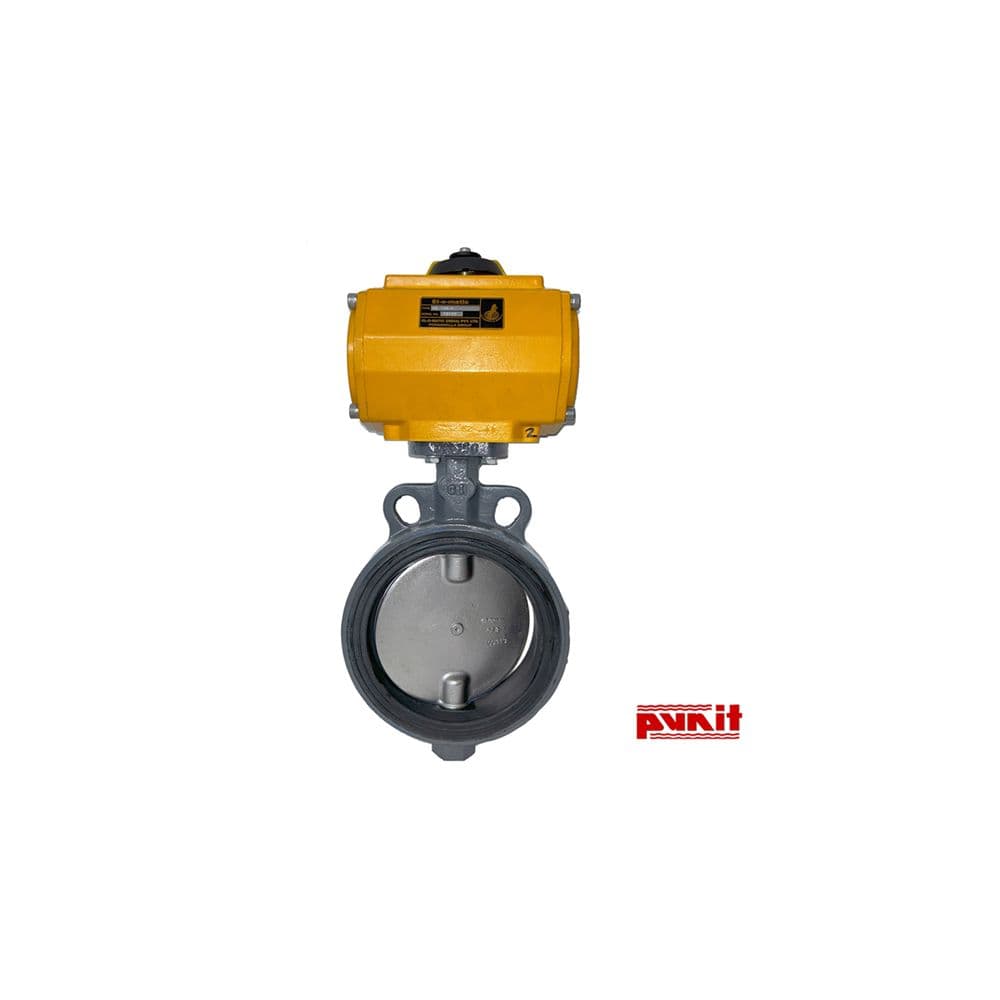In the dynamic realm of industrial fluid control, grasping what a butterfly valve is can significantly enhance system efficiency, cost savings, and reliability. As a compact, quarter-turn valve, butterfly valves excel in regulating flow in large-diameter pipelines across sectors like water treatment, HVAC, and chemicals. If you're querying "what is butterfly valve" or delving into "industrial butterfly valve applications," this comprehensive guide covers their mechanics, varieties, and optimal usage scenarios. With the global butterfly valves market valued at approximately USD 11.7-11.8 billion in 2025 and holding about 20% share of the overall industrial valves market, these valves are pivotal for infrastructure projects aiming for 10X growth and worldwide expansion.
I. Introduction: The Butterfly Valve’s Dominance in Industry
Butterfly valves represent a substantial portion of the industrial valve landscape—around 20% market share—thanks to their lightweight design, ease of installation, and cost-effectiveness compared to gate or globe valves.coherentmi.com Projected to reach USD 11.7-11.8 billion in 2025, the market is growing at a CAGR of 5-6.5%, driven by demand in water infrastructure, energy, and automated processes. Their primary advantage? Quick operation and tight shutoff in large lines, making them indispensable for "when to use butterfly valve" in space-constrained or budget-sensitive applications. For companies pursuing global reach, collaborating with butterfly valve supplier like Punit Valves ensures access to durable, compliant solutions that fuel exponential growth.
II. How Butterfly Valves Work: Engineering Breakdown
A butterfly valve is a rotational motion valve that uses a disc to regulate flow. Positioned in the center of the pipe, the disc rotates on a stem to open or close the pathway.
Anatomy Visual
Visualize the components: A resilient seat lines the body (cast iron, stainless steel, or PVC), a disc (metal or coated) acts as the closure element, a stem connects to the actuator or handle, and o-rings or packing ensure stem sealing. End connections include wafer, lug, or flanged styles.
Operation Principle
The disc rotates 90° via the stem: Parallel to flow for open (minimal restriction), perpendicular for closed (sealing against the seat). This quarter-turn action enables fast response, ideal for automation.
Key Sealing Mechanism
Sealing occurs as the disc compresses against the resilient seat (e.g., EPDM or PTFE), providing bubble-tight shutoff. In high-performance models, multiple offsets reduce torque and wear, achieving low leakage per API 598 standards.
III. Types of Butterfly Valves
Butterfly valves vary to fit diverse "industrial butterfly valve applications." Key types include:
- Concentric (Zero Offset): Disc centered in the seat; suited for low-pressure (up to 150 PSI) water and air.
- Double Offset (High Performance): Stem offset from centerline; handles higher pressures (up to 300 PSI) with reduced friction.
- Triple Offset: Additional offset for metal-to-metal sealing; ideal as a "high performance butterfly valve" for up to 1,440 PSI in oil and gas.
- Body Styles: Wafer (between flanges), Lug (threaded inserts for end-of-line), Flanged (bolted connections).
- Materials-Based: Rubber-lined for corrosives, metal-seated for high temperatures.
- Actuated: Pneumatic or electric for remote control.
Selecting from an quality butterfly valve supplier ensures compliance for critical uses.
IV. When to Use a Butterfly Valve: 5 Industrial Use Cases
Determining "when to use butterfly valve" hinges on their compact size and low torque needs. Here are five prime examples:
- Water Distribution and Treatment (e.g., Municipal Pipelines)
Why butterfly valves? They offer low head loss and easy maintenance, with resilient seats ensuring tight shutoff at low pressures. - HVAC Systems
Ideal for balancing air and water flow in ducts and chillers, where space savings and quick actuation reduce installation costs by up to 30%. - Chemical Processing
Lined models handle corrosives; double-offset designs provide reliable isolation in reactors. - Food and Beverage
Sanitary versions with FDA-approved seats prevent contamination in pipelines for liquids like milk or juices. - Oil and Gas (Large-Diameter Lines)
Triple-offset "high performance butterfly valve" for throttling in pipelines, certified to API 609 for fire-safe operation.
These "industrial butterfly valve applications" showcase their efficiency in large-scale flow control.
V. When NOT to Use Butterfly Valves
Butterfly valves shine in many scenarios but have limitations:
- ❌ High-Pressure Throttling: Prone to cavitation; prefer globe valves for precise control.
- ❌ Abrasive Slurries with Particulates >5mm: Disc erosion; opt for knife gate valves.
- ❌ Ultra-High Temperatures (>400°C): Seat degradation; use ball or gate valves.
VI. Selection Criteria for Butterfly Valves
Choosing wisely involves:
- Pressure Ratings: From 150 PSI for concentric to 1,440 PSI for triple-offset; match to ANSI classes.
- Materials: Ductile iron for water, stainless steel for chemicals—ensure media compatibility.
- Certifications: API 609 for lug/wafer designs, ensuring torque and leakage standards.
- Size and Torque: Larger discs need gear operators; calculate based on flow velocity.
- End Connections and Actuation: Wafer for compactness; ISO 5211 for actuators.
Punit Industrial Valves manufactures Butterfly valves in following design.
Wafer Centric Butterfly Valves
Fully Lugged Centric Butterfly Valves
Double Flange End Centric Butterfly Valves
Wafer Double Offset Butterfly Valves



